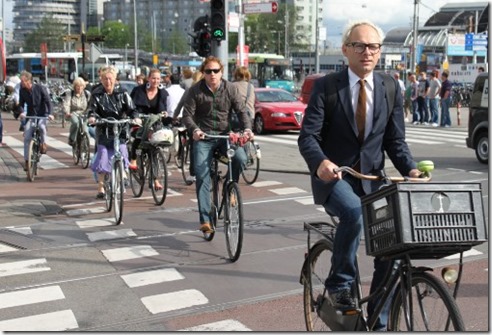by: Hunter Walsh

Encouraging employees to ride a bike to work is growing in popularity not just because of cycling and employee wellness trends, but because it makes sense for both employers and employees to take advantage of the many benefits cycling has to offer. Today only about 1% of Australian workers cycle to work while about 66% drive, according to data from The Heart Foundation. Motivating and supporting active transportation can make a significant improvement in the health and wellbeing of your employees and your business.
1. Inactivity is a killer.
Physical inactivity like sitting at a desk all day and driving to get around instead of walking or cycling takes a toll both physically and financially. Johns Hopkins Medicine reports that physical inactivity is a known risk factor for high blood pressure, coronary heart disease, anxiety, depression, cancer and obesity. KPMG – Econtech data reports costs of physical inactivity in Australia to be $719 million in healthcare costs, and $9.2 billion in productivity cost. Cycling to work is an excellent solution because it’s efficient – combining exercise and transportation. Healthier workers make a healthier workplace, and cycling makes people healthy and happy…
2. Cycling makes employees happier.
A study conducted at the University of Sydney surveyed 846 urban commuters in Sydney and found that commuter cyclists are happier than drivers, pedestrians and people using public transport. About two times happier, to be exact, which leads us to reason number 3
3. Biking to work boosts productivity.
Happy employees are about 12% more productive, according to a study by economists at the University of Warwick. “When I bike to work I’m refreshed and relaxed,” said Lia Weston, partner at Bio-Mechanics Cycles & Repairs in Adelaide who has been cycling to work for 7 years. “The movement wakes me up.” Many people who cycle to work liken their morning ride to a cup of coffee, and the data backs up that feeling. A study of 100 employers conducted by Cyclescheme found that two-thirds of employers surveyed reported that employees who cycle to work are more energetic and productive.
4. Cycling improves mental health.
A long-term commuter study (10 years) looked at workers who commuted by car, public transportation, foot and bicycle. Thestudy, conducted by University of East Anglia’s Norwich Medical School and the Centre for Health Economics at the University of York, evaluated all types of commuters and took a closer look at those who had switched from commuting by car or public transport to active transportation like cycling. They found that those who made the switch had improved concentration and less stress.
5. A ride a day keeps the doctor away.
Employees who regularly cycle to work take one day less sick leave per year on average than their non-cycling colleagues, according to study findings from Dutch Research and Testing organization the TNO conducted on behalf of Tineke Huizinga, the deputy minister for traffic and works. The same report says that every 1% increase in the number of employees that cycle to work saves their employers nearly €27M per year due to lowered costs due to illness and absenteeism.
6. Parking cars is expensive. Parking bikes, less so.
A parking space can fit a single motor vehicle and cost about $22,000 to build. In comparison, that same space can fit as many as 20 bicycles in a bike rack, which costs only about $400 to install.
Bike shops Bio-Mechanics Cycles & Repairs in Adelaide and Ivanhoe Cycles and Melbourne Bicycle Centre in Melbourne have teamed up with global public health alliance My City Bikes to create beginner biking resources that assist entry level riders learn where to bike safely in their city.
These resources can help employees who are new to cycling find safe routes and need-to-know safety and maintenance information so they can start biking to work. For more information about beginner biking and organized workplace wellness programs to encourage cycling to work, visit mycitybikes.org/australia-work.










